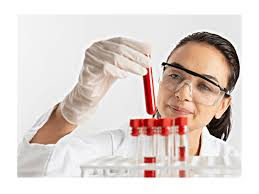Introduction
A skin condition known as erythema nodosum (EN), which affects the layer of fat beneath the skin, is classified as panniculitis. Even though the term "condition" sounds complicated, it's important to understand for people who might experience its symptoms or who want to learn more about their dermatological health.
The hallmark of erythema nodosum is the development of painful, tender, reddish-purple nodules or lumps, usually on the shins. These nodules often develop symmetrically on both legs and range in size. The most common location is the shins, but it can also affect the thighs, forearms, and trunk.
It is assumed that erythema nodosum is a hypersensitivity reaction. It frequently appears as a dermatological symptom of an infectious or other illness.The incidence of erythema nodosum differs between different countries. The peak incidence occurs between the ages of 20 and 40, though it can happen at any age. It is roughly five times more common in adult women than in adult men. In kids, the frequency is the same for boys and girls.
Symptoms & Morphologhy of Rash
An excruciating rash is followed by fever, aching, and arthralgia during the eruptive phase of erythema nodosum.
Lesions start off as sensitive, red nodules. The borders have a diameter of 2–6 cm and are ill-defined.
The initial week of erythema nodosum is characterised by hard, tense, and painful lesions. In the second week, they may become fluctuant, much like an abscess, but they do not suppurate or ulcerate. In most cases, lesions disappear after two weeks, but occasionally they reappear after three or six.
Weeks may pass while you still have aching legs and swollen ankles. Initially, they are a vivid crimson, but after a week or two, they take on a blue or purple tint, and they even turn yellow, akin to a healing bruise, before eventually going away.
More than half of patients experience joint pains, which usually start two to four weeks prior to the eruptive phase. The joints may have effusions and are tender, swollen, and red. There could be stiffness in the morning. Most frequently affected areas are the wrists, ankles, and knees. While synovitis goes away in a few weeks, stiffness and pain in the joints can linger for up to six months. The joint has not undergone any detrimental alterations, and the synovial fluid lacks cells.
Underlying causes
As a reaction to an underlying trigger, EN is a reactive condition rather than a stand-alone disease:
- Inflammatory bowel disease, Behçet's disease, pregnancy, drug reactions, streptococcal infection, and primary TB are the most frequent causes.
- Erythema nodosum can also be caused by sarcoid.
- Erythema nodosum can manifest clinically in leprosy, but the lesions' histological appearance is distinct.
- EN can be brought on by bacterial and viral infections, such as fungal infections, TB, or streptococcal throat infections.A higher risk of developing EN is linked to conditions like autoimmune such as sarcoidosis and inflammatory bowel disease.
- It typically appears in the second half of pregnancy. It may happen when using oral contraceptives and is likely to recur in subsequent pregnancies.
- Some cases have been linked to HIV, hepatitis B, hepatitis C, and Epstein-Barr virus.
Investigations
Send an ESR and FBC. Regardless of the cause, ESR is frequently very high, and CRP might have a greater role.
Despite the possibility of a negative result even in cases of streptococcal illness, a throat swab is a suitable test for streptococcus.
The anti-streptococcal O (ASO) titre could be more beneficial, even though a normal titre does not rule out infection. Perhaps more valuable is a rising titre.
Tests for Y. enterocolitica, Salmonella spp., and Campylobacter spp. in the stool and blood cultures may provide results; however, since most labs will not process formed stool for infection, this is usually only worthwhile if the patient has diarrhoea.
Angiotensin-converting enzyme (ACE) and calcium levels are frequently elevated in sarcoidosis.
In cases of sarcoidosis, a chest X-ray may reveal evidence of pulmonary tuberculosis, unilateral or asymmetrical adenopathy in cases of malignancy, or bilateral hilar lymphadenopathy (BHL).
To rule out coccidioidomycosis and tuberculosis, intradermal skin tests might be necessary.
When there is uncertainty about the diagnosis, an excisional biopsy may be useful.
A complete medical history, physical examination, and occasionally additional tests, like blood tests, chest X-rays, or skin biopsies, are part of the diagnosis process in order to determine the underlying cause.
Treatment
Taking care of the underlying cause is the main objective of EN treatment. Most cases are self-limiting and require only symptomatic relief.It may be necessary to prescribe antibiotics or antifungal drugs if EN is secondary to an infection. In autoimmune disease cases, taking care of the underlying illness becomes essential.
Symptomatic Relief: Nonsteroidal anti-inflammatory medicines (NSAIDs) or corticosteroids can be used to treat the pain and inflammation brought on by EN.
Supportive Measures: Applying cold compresses, elevating the afflicted limbs, and getting rest can all help reduce symptoms.
Many potential treatments for persistent cases of erythema nodosum are listed in the literature; these include oral steroids, tetracyclines, macrolides, potassium iodide, and biologic drugs. Nevertheless, it would seem prudent to consult secondary care at this point to ensure that no underlying diagnosis is being overlooked.Erythema nodosum typically goes away in six weeks, but it can take longer in some cases, particularly if it is idiopathic or the underlying cause is still present.
Take away Point
Try to find the main causes of the rash if you start to notice one on your body so that it can be better managed. However, it will typically settle down on its own, so there's no need to worry.











No comments:
Post a Comment